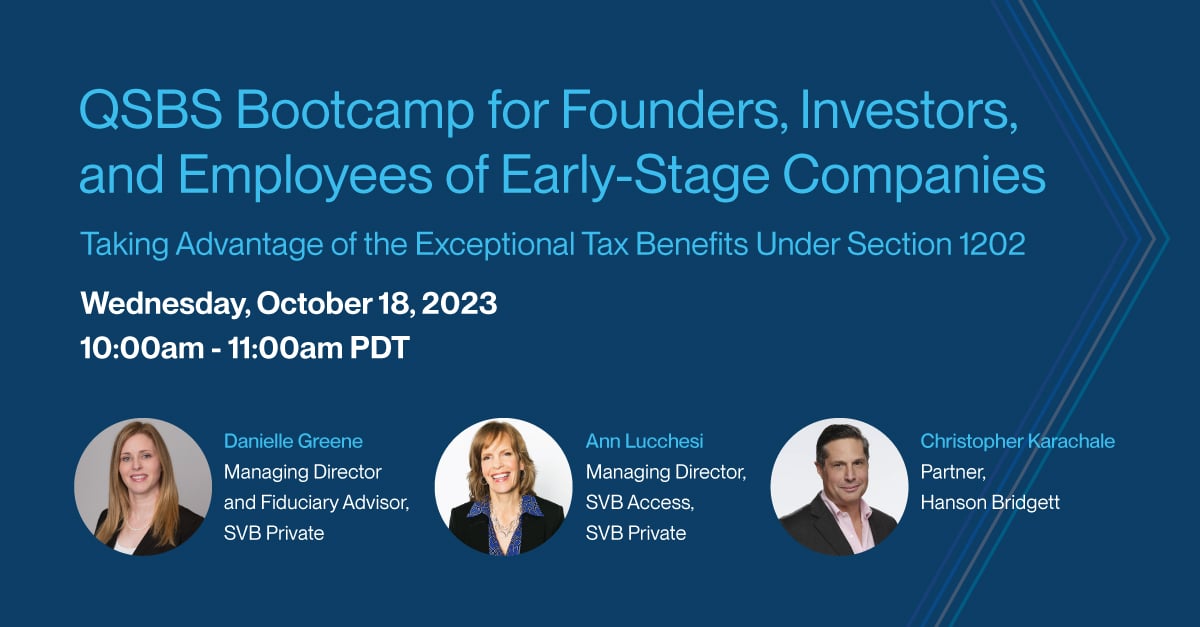As you optimize your cash flow and debt as an individual, you should specifically seek opportunities to save based on the deductibility of interest costs. In this article, Lorraine Monick provides guidelines and examples, which prove that lending structures and terms can have a direct impact on a borrower's bottom line.
The tax treatment of interest for an individual taxpayer can range from fully deductible to partially deductible to not deductible at all, depending on the category of interest. For example, interest expenses associated with mortgage balances above the deductible limit of $750k are not deductible expenses.
Investment interest expense from loans used to invest in stocks, bonds, private funds or companies, and to exercise options is generally tax deductible as long as the investor follows interest tracing rules which track how they spend the loan proceeds. If an investor has net investment income in any one year, they can use the investment interest expense deduction up to the amount of any net investment income. Matt Wheeler, CPA of Wheeler Accountants LLP in Saratoga, CA advises that “the IRS has a strict set of rules governing the order in which debt proceeds or repayments are allocated for purposes of determining deductible interest expense. Following proper form can maximize your deductible interest expense amount.”
Investment income includes:
-
Taxable interest (ie. not the interest earned from tax-exempt bonds)
-
Nonqualified dividends
-
Annuity income
-
Certain royalties
-
Short term capital gains
-
Qualified dividends and long term capital gains, if the taxpayer elects to treat them as investment income
Investment interest expense is reported on Schedule A of your tax return. It is deductible only if the taxpayer itemizes deductions and is limited to the amount of reported net investment income.
Scenario 1: Investor with diverse balance sheet seeking to maximize interest expense deductions
Has a $2.5M mortgage against a home valued at $5M, and $3M in cash/equivalents. She converts the nondeductible mortgage interest on her mortgage balance above $750k to deductible interest expense by:
-
Using her cash/equivalents to pay down the mortgage balance to $750k
-
Waits a seasoning period to avoid the step transaction doctrine (confirm your waiting period with your CPA)
-
Refinances the mortgage with a balance of $2.5 million (the original mortgage amount)
-
Takes the cash out from the refinance ($2.5M - $750k = $1.75 mill), and transfers it directly into a separate taxable investment account
|
Refinance mortgage at $2.5M |
→ $750k in loan proceeds pays off the existing mortgage → $1.75M in loan proceeds directed to a taxable investment account |
Result:
Interest expense from her $2.5M mortgage is fully deductible: mortgage interest on $750k is deductible through the qualified residence interest rules, and $1.75M is deductible through investment interest expense, to the extent that she has investment income. The investor would have an additional annual tax savings of more than $30k.
Benefits of Capturing Maximum Interest Expense Deductions |
||||||||||||||||||||||||||
|---|---|---|---|---|---|---|---|---|---|---|---|---|---|---|---|---|---|---|---|---|---|---|---|---|---|---|
| COMPARE: Current mortgage of $2.5M | ||||||||||||||||||||||||||
|
||||||||||||||||||||||||||
| COMPARE: Refinance current $2.5M mortgage with "cash out" loan proceeds | ||||||||||||||||||||||||||
| Assumptions: Current mortgage of $2.5M is paid down (via cash on hand) to $750k At refi, "cash out" proceeds of $1.75 million directed to a taxable investment account Interest deductibility: first $750k of mortgage debt Interest deductibility on $1.75M of investment-related debt (to extent of net investment income) |
||||||||||||||||||||||||||
|
||||||||||||||||||||||||||
| Additional annual tax savings of Scenario 2 over 1: $35,503 |
||||||||||||||||||||||||||
|
||||||||||||||||||||||||||
Note:
-
Ensure the “cash out” proceeds are directed to a public or private taxable investment account (securities, bonds, money market accounts, partnership commitments). The loan interest on the purchase of tax-exempt securities (muni bonds) is not tax deductible.
-
Watch closing costs and interest rates to ensure the end result is beneficial from an after-tax perspective.
-
For interest tracing purposes, it is generally recommended to keep the funds segregated from other investments and personal expenditures. If the borrowed funds are comingled with funds/investments that were not borrowed, then potential interest deductions on the loan could be lost.
-
In order to best optimize this strategy, borrowed monies should not be used for personal expenditures.
Case Study: Company founders seeking to exercise stock options
A Founder of a young growing private company has founder stock which qualifies for the Qualified Small Business Exception and has garnered bonuses in ISO and Non-Qualified stock options. In order to minimize taxes and to start the holding period for long term capital gain purposes, he wants to exercise the options while the value of the company is low.
The cost to exercise is $500k. He decides to raise the $500k to support the cost of the option exercise by:
-
Accessing his home equity through a line of credit, cash out mortgage refinance, securities backed loan or other loan structure.
-
Directing loan proceeds to the company to fund the option exercise
Result:
The $500k in proceeds from the loan used to acquire the stock would be classified under the investment interest bucket and any interest paid on the loan would qualify as investment interest expense. The investment interest expense deduction can be used up to the amount of net investment income in any given year. (Note: it does not need to be investment income from the sale of the stock that was acquired, it can be any investment income).
Note:
-
There could be taxes due from exercising ISOs and NSOs. If possible, do not direct the cash from the refinance to pay taxes because then the interest expense would not be tax deductible.
-
Ordinarily, long-term capital gains are not considered investment income but investors have an option to make an election to treat them as investment income and offset them with investment interest expense. It is important to work closely with your CPA/tax advisor when utilizing such strategies.
-
If investment interest expense is greater than the net investment income, it carries forward into future tax years indefinitely until there is net investment income.
Conclusion
Individual investors can benefit from regularly evaluating their leverage ratios, structure and costs. Ask your Relationship Manager to compile a statement of liabilities and review it with you regularly. Be sure to work together with your advisor and CPA to ensure you are getting the maximum value and lowest costs from the liabilities on your balance sheet. Under today’s complex rules, deducting interest expense is neither simple nor automatic, so it’s important to consult with your CPA and your Relationship Manager for advice before implementing any strategies designed to maximize your tax deductions.














